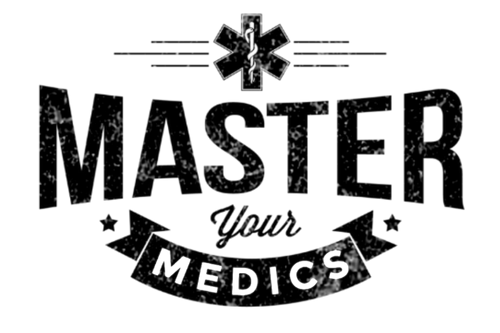How to Treat Pulmonary Embolisms

Goals that MasterYourMedics strives towards
- Slash your study time in HALF!
- Actually RETAIN the knowledge you need.
- PASS your exams with little stress!
EMT and Paramedic School is so stressful and tough. Master Your Medics will teach you to be the medic you always dreamed of being.

[00:01] today we're talking about pulmonary embolism. Pulmonary embolisms are blood clots that lodge in the pulmonary artery, blocking blood flow through that vessel. That's typically how pulmonary embolisms cause some pretty serious effects.
[00:16] It is a life threatening condition, so we absolutely need to be on the side of caution with these type of injuries, and they can be quite subtle at first. They do cause an acute shortness of breath initially, typically, but other than that you really have to dig into the history and the other vital signs to start increasing your suspicion if it's a pulmonary embolism or not.
[00:42] It absolutely leads to a hypoxemia, which is the lack of oxygen within the blood vessel, within the blood itself, which will leave to the hypoxemia itself and the lack of oxygen within cells later on. So that's kind of what our issue here is with pulmonary embolisms.
[01:00] So typically these types of patients have a history of some sort of bedridden, or history of recent surgery, those types of thing, and the reason for that is that typically, with pulmonary embolisms, these patients that are bedridden, or that have had recent surgery, they're immobile.
[01:21] So, say I've had a knee surgery and I'm keeping my leg immobile for quite a few days sometimes. Sometimes, if I'm not taking any type of anticoagulant therapy or anything like that in order to keep me from building clots, I can start building clots within my leg, where my surgery was or near it. It's all because it's immobile, so blood's not really flowing nearly as well if I'm keeping my leg immobile.
[01:47] So the clot builds, and a part of that clot could break off, flow through the system, through the right ventricle, out the heart, and then into lung circulatory system. And this is where we run into the problem, because that clot gets lodged into the lungs, and it just basically has floated all the way through the body to get to the lungs. And it just causes significant problems.
[02:09] So this blockage, after it goes through the right ventricle, it's gonna have to start pumping harder because it feels like it needs to get oxygen, or blood, to all the parts of the lung. So when it can't, or when it's starting to notice increased resistance, it tries to pump harder, which only increases pulmonary hypertension. That can cause even more problems within the system as well.
[02:35] So signs and symptoms we talked about. Sudden, severe, unexplained shortness of breath, or dyspnea, this is the first thing that you're gonna notice is all of a sudden they're breathing okay and then five minutes later they could not catch their breath for the life of them. So that's a pretty good indicator that we're looking at something like a pulmonary embolism.
[02:53] Other things like labored breathing, tachypnea, which is really, really fast breathing, usually short, fast breathing. Tachycardia, and a pleuritic chest pain, so chest pain that's not ischemic in nature as far as it being MI, but definitely chest pain that's more pleuritic in more the ribcage area. That's something that you'd be looking for there.
[03:16] So treatment with them, large pulmonary embolisms can lead to cardiac arrest, absolutely, because we're causing a ton of hypoxemia within the blood. And that will lead to really poor tissue profusion and brain profusion. So we wanna make sure that we are keeping a good indicator of that, we're thinking that these patients can go downhill very, very quickly.
[03:40] So maintaining airway and breathing is the main priority, make sure you're getting high levels of oxygen for these patients. Intubation may need to be required for these types of patients in order to control the airway properly, however this is something that you would leave up to ALS and their decision making, or if you're close enough to a hospital just haul to that hospital and get them there and get treatment done.
[04:06] When they're in hospital, the main thing here is once they identify that it is a PE, then patients will likely need thrombolytics, and this will hopefully break up the clot within the lung before any type of long term or chronic damage has been done to the lung itself. Sometimes it's effective, sometimes it's not. But that's typically their first step in trying to treat a pulmonary embolism.
